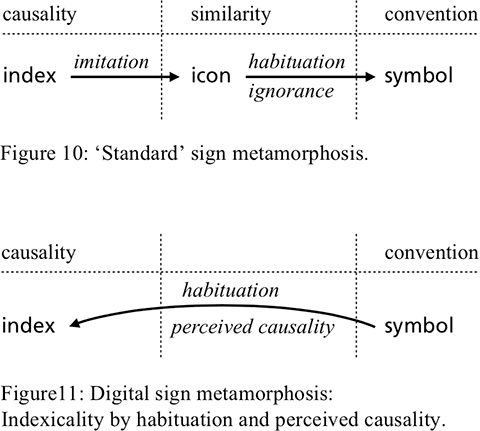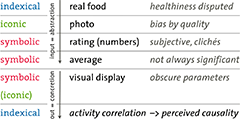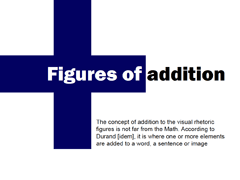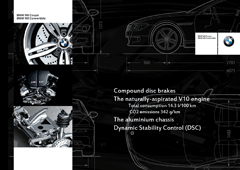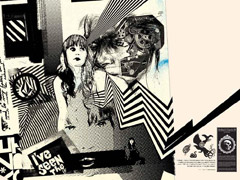Semiotics and Visual Rhetorics
Publikationen und Projekte aus Forschung und Lehre
Affordances and Metaphors Revisited:
Testing Flat vs. Skeuomorph Design
presented at HCI 2018, 32nd Human Computer Interaction Conference. Belfast, UK, 2018
The arguments about skeuomorph versus flat design (i.e. level of abstraction) have so far been based on comparatively little evidence and were largely dominated by strong opinions voiced in informal online media. This paper presents an a/b-study to assess the strengths and weaknesses of these design approaches with the distinct user groups applying them. First results gave no clear indications of which approach could be considered the best. Surprisingly, however, older and inexperienced users experienced more problems using "naturalistic" skeuomorph interfaces than abstract flat interfaces. As a result, the concept of skeuomorph design enabling the use of real-world knowledge to enhance novice user’s learnability is cast into doubt.
Download paper
Dynamic Sense-Making:
A Semiotic Approach to User Interface Design.
presented at AISDR 2013, 5th International Congress of the Int.
Association of Societies of Design Research. Tokyo, Japan, 2013.
Contemporary multi-touch interfaces often represent real life objects in a hyper-realistic manner, perpetuating the classic concept of the real life interface metaphor as a means to facilitate use. These phenomena cannot be understood without a closer look at the users’ cognitive processes when ‘decoding’ visual and auditory signs in the interfaces of digital products. To this end, semiotic theory has been applied to describe human- computer-interaction paradigms and graphical user interfaces in particular – but often based on oversimplified concepts of sign-types (index, icon, and symbol), focussing exclusively on attributes of the sign – it has ignored the user’s perception and way of inferring from sign to meaning. In contrast to a sign-centric approach, a user-centric concept of sense-making allows for the semantic aspects to change dynamically with changing users. A deeper understanding of these change processes may facilitate decision-making in the design process.
Download Paper
Visual Rhetoric of Self-Optimization Systems
presented at AISV-IAVS 2012, 10th Congress of
the International Association of Visual Semiotics.
Buenos Aires, 2013, with Daniela Kuka.
Self-optimization systems collect and visualize user data in order to change behavior and improve performance in areas like fitness, diet, work efficiency, or communication behavior. We analyzed interfaces both from a rhetorical and a semiotic perspective. How do they motivate users to adjust their behavior, and how do they transform abstract data into plausible and credible signs of the self?
Download Paper
Visual Language of Newspapers
Seminar "Visual Rhetoric"
Master Digital Media, Wintersemester 2008/09
Studierende: Datenschutz
In newsrooms often design is considered the arrangement of text and images inside a blank page—just like a jigsaw puzzle. This paper presents a different focus: Design as an important communication tool, able to reinforce the message. Design can use the same tools as speech: It is a visual application of rhetoric and can create contradictions, double meanings and a variety of relations inside a page.
Logos and Pathos in Automobile Advertisement
Seminar "Visual Rhetoric"
Master Digital Media, Wintersemester 2008/09
Studierende: Datenschutz
Mona Lisa vs. Che Guevara
Seminar "Visual Rhetoric"
Master Digital Media, Wintersemester 2008/09
Studierende: Datenschutz
This paper compares two most popular images. Leonardo Da Vinci's Mona Lisa, and Alberto Korda's photography of Che Guevara. Based on a semiotic analysis, the semantic shifts over time are illustrated: From iconic painting to the symbol for renaissance, and later to the symbol for "picture" in general. And from photographic index/ikon to the symbol for latin american revolution, and to a symbol for rebellion in general.
Visual language of a snowboard brand
Seminar "Visual Rhetoric"
Master Digital Media, Wintersemester 2008/09
Studierende: Datenschutz
Non-Speech Audio-Semiotics: A Review and Revision of Auditory Icon and Earcon Theory
presented at the 18th International Conference on Auditory Display.
Atlanta, USA, 2012
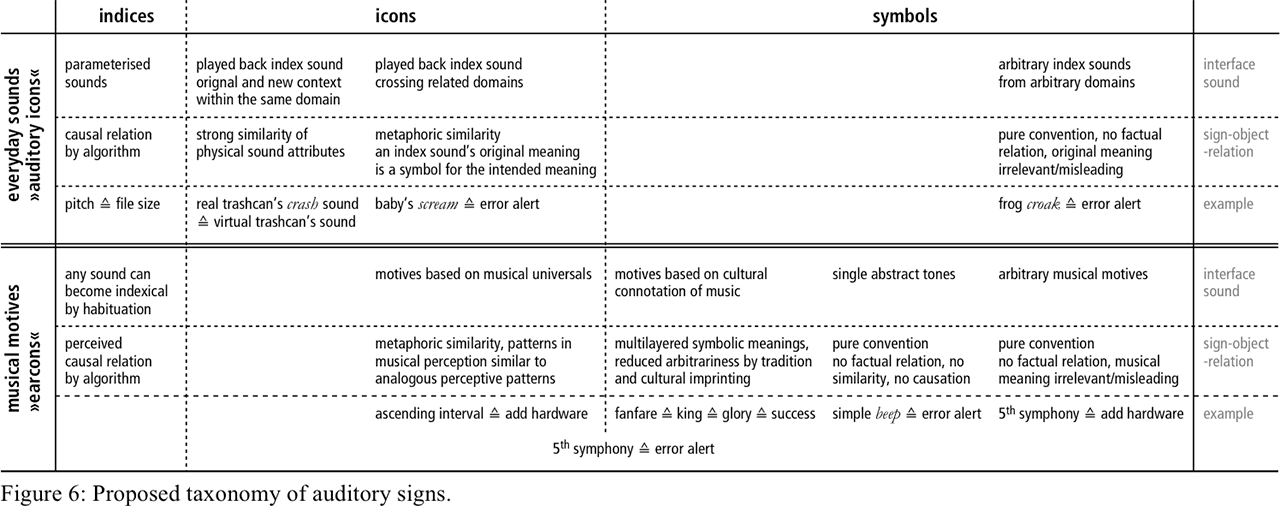
For more than two decades, the discourse on non-speech audio interfaces has been dominated by a dichotomy between auditory icons, which are based on everyday hearing, and earcons, which are based on musical hearing. The corresponding theory behind these concepts has to be revised for several reasons. First, the authors of these theories partly use semiotic concepts and terminology, but not always in a correct way. Second, the classification of auditory icons as "iconic", and earcons as "abstract" is too simple and based on the questionable premise that everyday sounds are per se iconic and musical motives are per se abstract and symbolic. Third, this widespread idea ignores the crucial role of the user in the process of perception.
Abstract, Download paper
